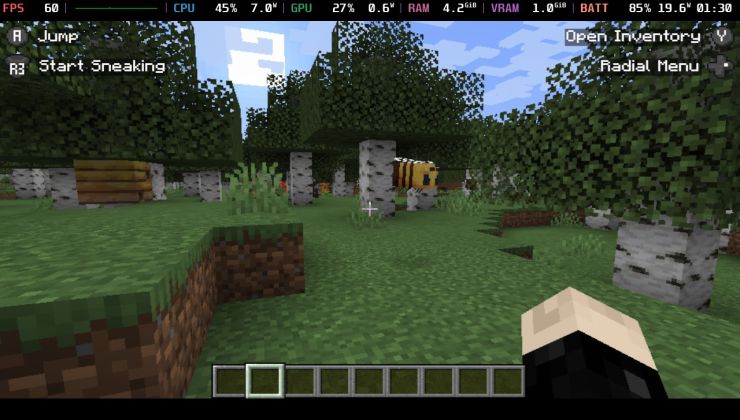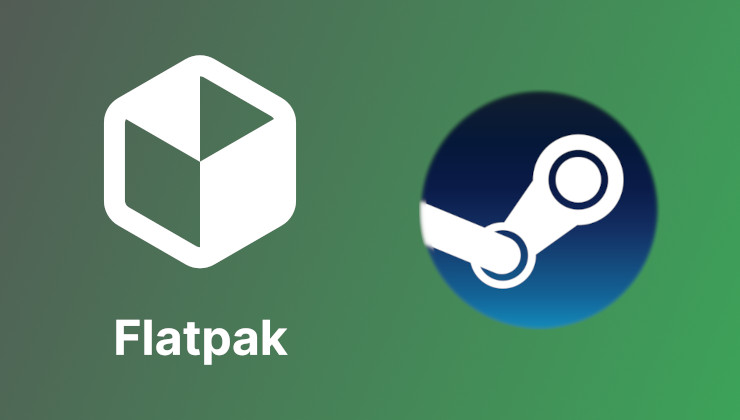While you're here, please consider supporting GamingOnLinux on:
Reward Tiers: Patreon. Plain Donations:
Patreon. Plain Donations:  PayPal.
PayPal.
This ensures all of our main content remains totally free for everyone! Patreon supporters can also remove all adverts and sponsors! Supporting us helps bring good, fresh content. Without your continued support, we simply could not continue!
You can find even more ways to support us on this dedicated page any time. If you already are, thank you!
Reward Tiers:
This ensures all of our main content remains totally free for everyone! Patreon supporters can also remove all adverts and sponsors! Supporting us helps bring good, fresh content. Without your continued support, we simply could not continue!
You can find even more ways to support us on this dedicated page any time. If you already are, thank you!
Login / Register
- Intel and NVIDIA drivers holding back a public SteamOS release, Valve not trying to compete with Windows
- GE-Proton 9-23 released with a Battle.net update fix for Linux / Steam Deck
- Discord screen-sharing with audio on Linux Wayland is officially here
- NVIDIA release new GPU driver updates for Linux and Windows after announcing security issues
- Games to claim from Prime Gaming, Jan 17 edition round-up for SteamOS Linux and Steam Deck
- > See more over 30 days here
-
GE-Proton 9-23 released with a Battle.net update fix fo…
- tuubi -
GE-Proton 9-23 released with a Battle.net update fix fo…
- Caldathras -
GE-Proton 9-23 released with a Battle.net update fix fo…
- tuubi -
GE-Proton 9-23 released with a Battle.net update fix fo…
- Mohandevir -
GE-Proton 9-23 released with a Battle.net update fix fo…
- benstor214 - > See more comments
 An idiots guide to setting up Minecraft on Steam Deck / SteamOS with controller support
An idiots guide to setting up Minecraft on Steam Deck / SteamOS with controller support How to install extra software, apps and games on SteamOS and Steam Deck
How to install extra software, apps and games on SteamOS and Steam Deck
I keep attempting to switch away from Windows. Pop was rather buggy for me and I'd like to try something other than standard Ubuntu. Looking at openSUSE Tumbleweed and Fedora right now for a number of reasons, good Wayland support being a top one.
I have a Steam Deck and love it. It runs most of my library with no issues. Do the improvements stemming from the Steam Deck to Wine/Proton/Steam Play carry over fully to any distro that runs Steam? If I install Steam on openSUSE Tumbleweed, for example, will the same games that run so great on my Steam Deck run great on my desktop?
In case it matters a lot, I'm on a 12600KF and a 1080Ti, DDR4.
Distro suggestions are also welcome - good multimonitor support is a must-have for me. I'm running three 1440p monitors, one at 165Hz. Pop had a lot of trouble with that for some reason.
Thanks so much!
It'll take a bit more setup on your behalf initially, but once you've got Steam setup, you're good to go.
On Tumbleweed, I would recommend you use the flatpak version of Steam to make setup easier and to also remove potential issues where a rolling release distribution may change underlying libraries, breaking something. (My logic here is to make it as easy as possible for you to manage)
However, since you use nvidia you will need to setup the nvidia drivers, which are proprietary and out-of-tree. These may, or may not in some cases, have a slight performance difference than AMD drivers. Naturally, do take into consideration performance capability differences of the hardware itself (between the decks hardware, and your own).
Nvidia and Wayland can work together but Nvidia with Wayland may be a little buggy since Nvidia have dragged their feet with Wayland support for a long time, so they have a lot of catching up to do. Though, this has been improving from what I've heard.
Regarding distributions, the Steam Decks desktop mode uses KDE, so if you enjoy that desktop experience look for distributions which feature it.
If you're still new to Linux, and were comfortable with the Decks desktop mode then I would recommend trying (without wiping your Windows!) the following distros (in no particular order):
- Linux Mint (Easy to use and setup)
- KUbuntu (Generally works well for most people)
- Fedora KDE (You'll need to take a few extra steps to get nvidia setup, but other than that, it should be simple enough.)
These should make things easy enough for you.
OpenSUSE has a very good KDE implementation, if not one of the best and most integrated ones. My experience while using tumbleweed was that it was mostly stable without issues for me despite being rolling and bleeding edge. However, I will add caution that using Nvidia on a rolling release distribution like Tumbleweed could lead to issues where the proprietary driver may not support the latest kernel, potentially leading to no usable GUI until it is updated/fixed.
It can also be a little complicated to get the Nvidia drivers working in the first place on OpenSUSE Tumbleweed.
However, Tumbleweed fully supports using BTRFS snapshots to rollback the system and enables them by default. It takes a snapshot before updates are applied. So if you are left with a broken system as described above, it is possible to rollback to before the updates which broke it were installed. But this will take a bit of further reading on your behalf to fully understand the process and how to use it.
Naturally, these are just my opinions!
(Sorry, this got a little longer than I intended!)
Are there particular downsides to using X11 if Wayland has issues with Nvidia? I was wanting to use Wayland mostly because it's newer and it may help with my multimonitor setup, but if that's not the case, I'd be happy to use X11 too.
Wayland is the cool new kid and all, but we’re not at the point X11 has become unusable just yet.
Edit: that said, your monitor setup may be a problem for X11. It’s up to you if you bear with it until Nvidia sorts out their Wayland support (if it’s not good enough already).
Last edited by damarrin on 23 Nov 2023 at 10:30 am UTC
It could actually be the other way around in your case, that is you may find you have more downsides using Wayland than X11.
Wayland is new, and fits many use cases but it does have its weaknesses, the biggest of which is support with Nvidia (this is mostly NVidia's fault though for not updating and preparing their drivers sooner.).
X11 is older and more battle tested. But it is showing its age.
The highest chance of running into issues is if your monitors run at different frequencies. For example, if monitor A is 60Hz, B is 144Hz, C is 165Hz then, you may get screen tearing and "lag" (whether you notice this or not is another matter). This can usually be resolved by bringing the monitors all down to match the lowest frequency monitor.
For my example that would be to have all three monitors in that example run at 60Hz. Wayland could/would solve this issue without the need to drop frequencies, but as mentioned Nvidia and Wayland don't always play nice together. But feel free to try it as it has been getting better lately.
Other than that, you should be able to set them up and have them working just fine.
But it's worth remembering, there are still a lot of penguins who use Nvidia. So I'm sure they have a few tricks and such to share if you need help
I'm an AMD GPU user now, but way back in time, in a distant far far away land, I was once using nvidia with X11, with multiple monitors at the same frequency, and it mostly "just worked". Ironically, back then you would have heard us saying the opposite, you'd have been told to avoid ATI/AMD and just get Nvidia if you had any hope of using 3D acceleration. The Linux community has since had a "bit flip" on that one.
But I will say, it all sounds more complex than it actually is! I'm just trying to ensure you have the information you may need